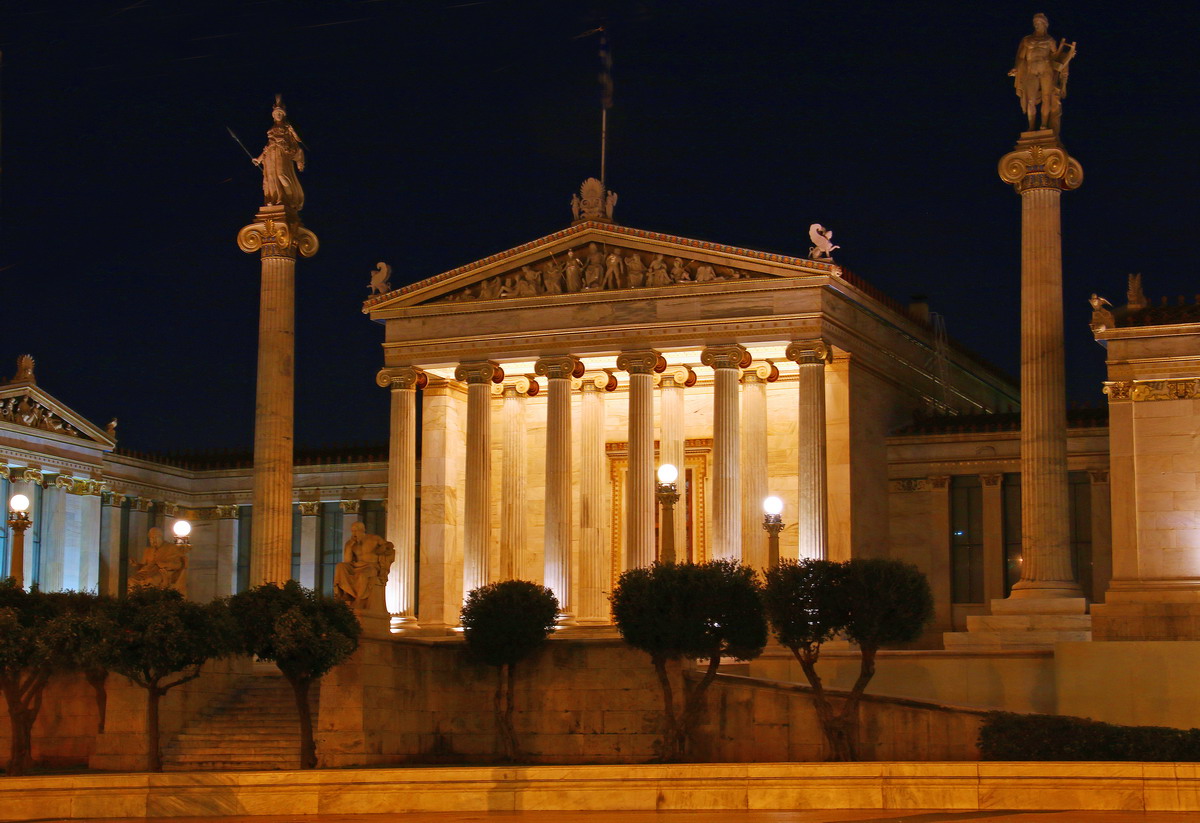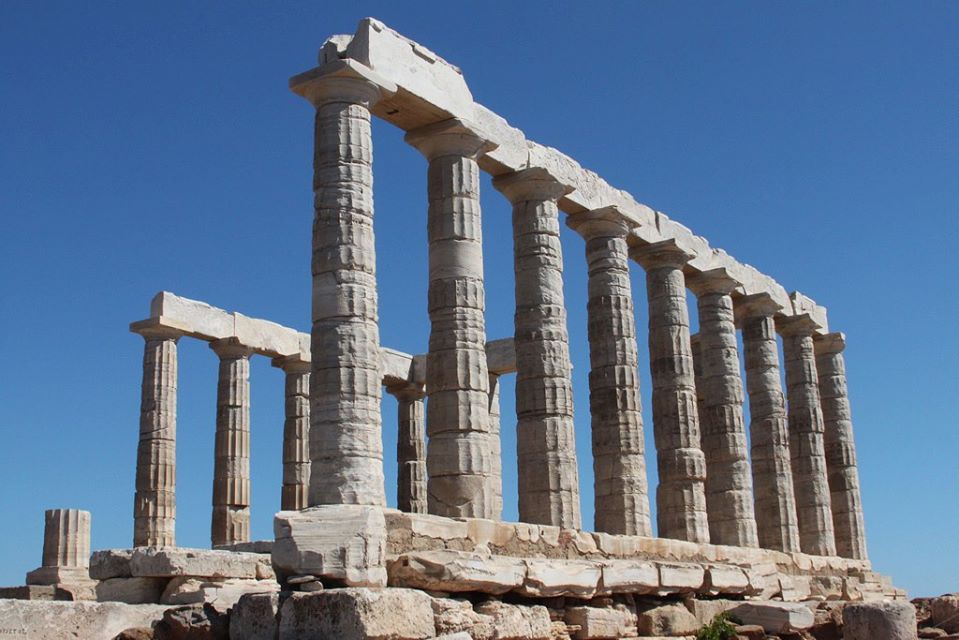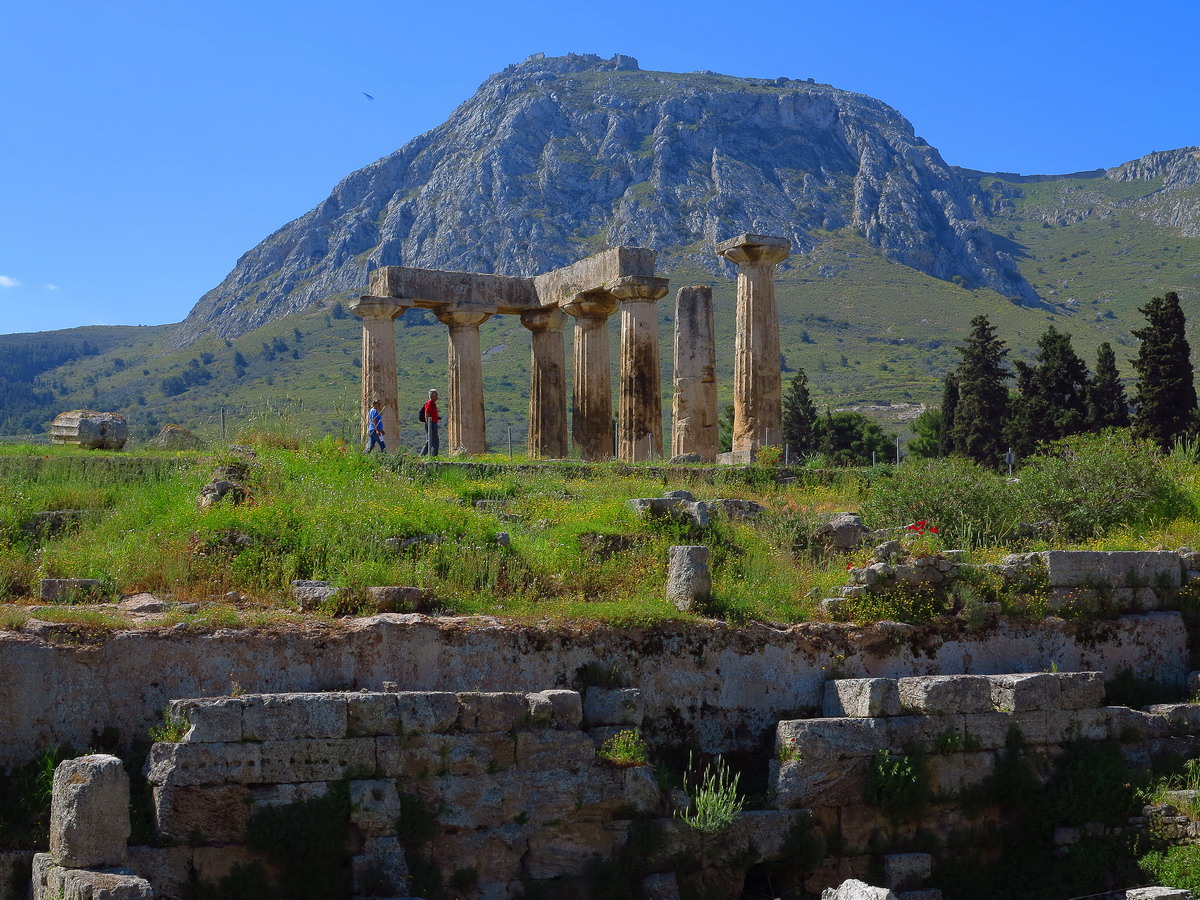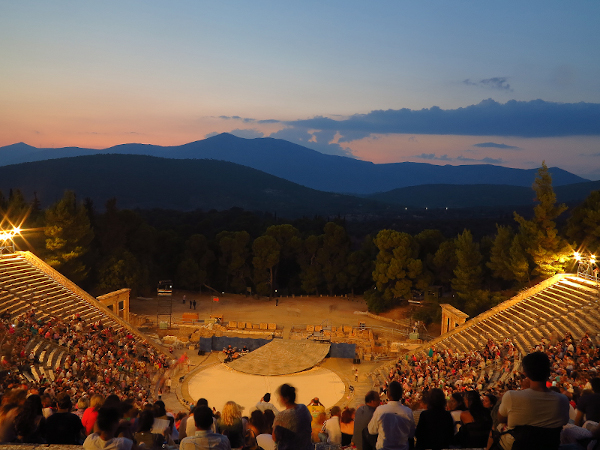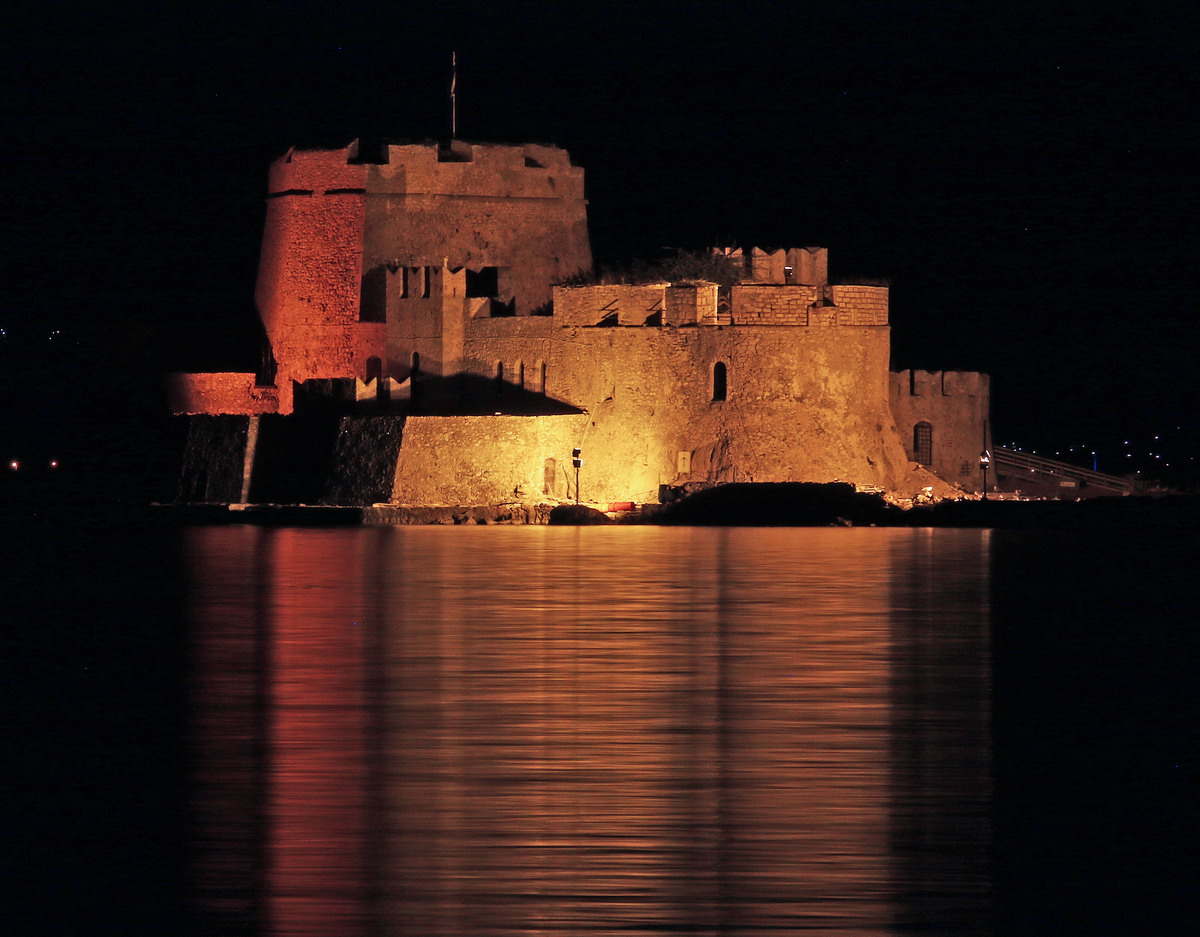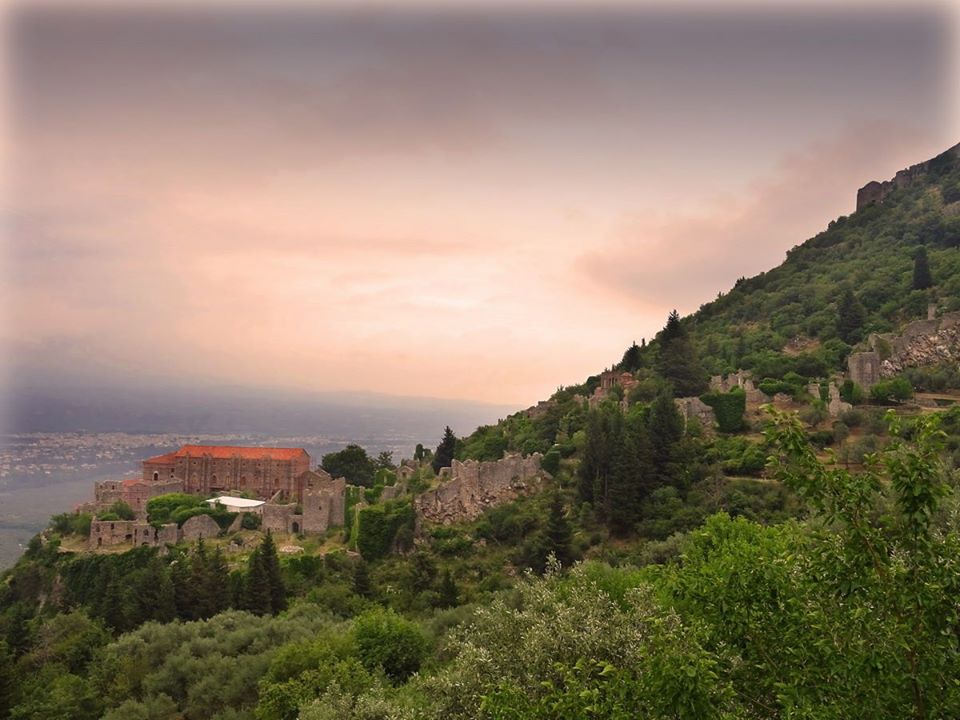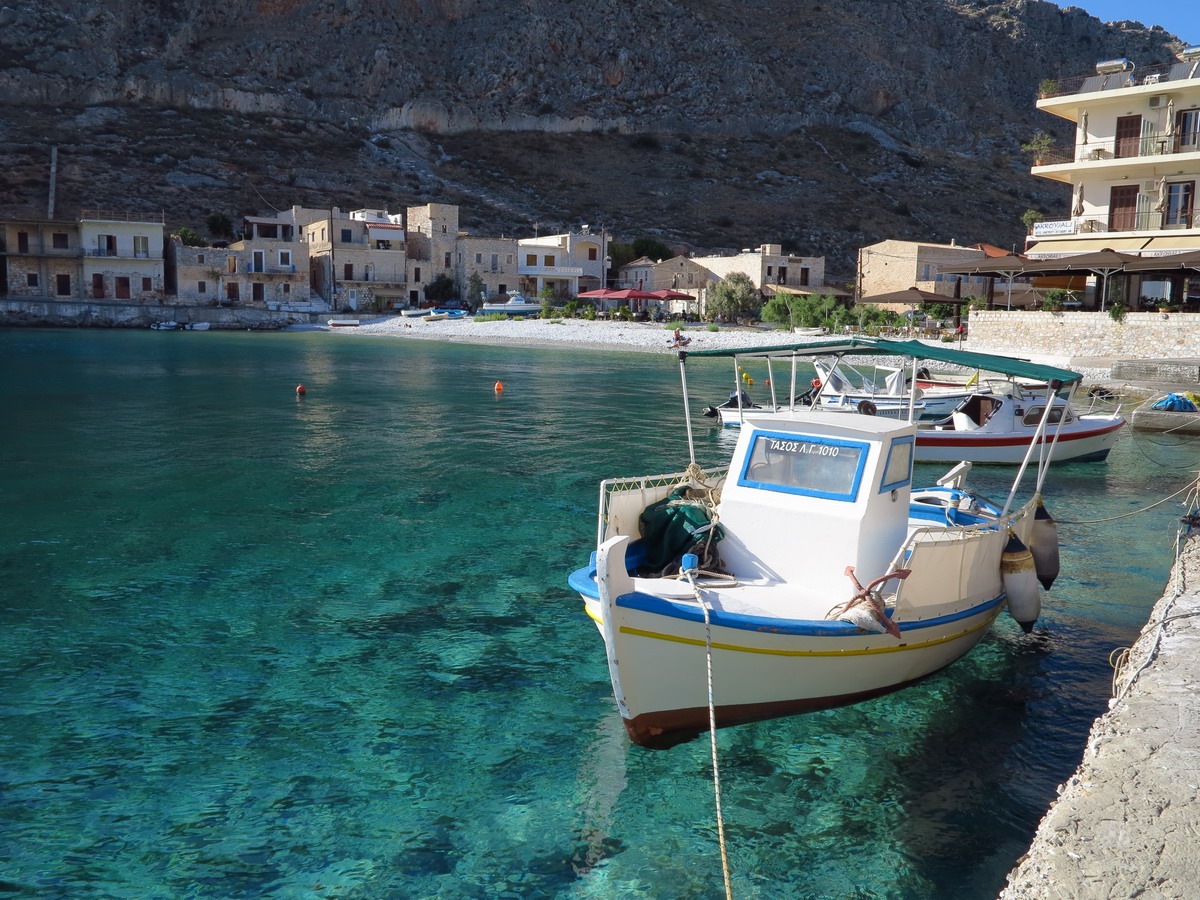Shore Excursions
Traveling around the world by cruise ship is a very popular way of tourism. Many Greek ports receive huge cruise ship visits every year, and hundreds of coaches carry large groups of visitors to various destinations. We diversify and organize our tours in small groups (up to 7 people) as we believe that a small group of tourists with a smaller car is much more manageable and can visit more places. It is also possible to tailor the program to the specific needs of each group.
Our Options
Half Day Tours
(4hrs to 6hrs)
During a Half Day Tour we can visit 1 of our proposed destinations. Please refer to each destination for more details.
Your free time for walking around, launch etc. will be approximately 1 hour.
Full Day Tours
(6hrs to 9hrs)
During a Full Day Tour we can visit 2 or more destinations. Please refer to each destination for more details.
Your free time for walking around, launch etc. will be approximately 2 hours.Our main concern is for you to make the best of the tours we provide. Please don't hesitate to contact us for any further information / request you may require!!!
Our Destinations
From Piraeus Port
· Includes a visit to:
The Acropolis of Athens (the
archaeological site includes the temple of “Parthenon” dedicated
to Athena Parthenos, the temple of “Erechtheion” dedicated
to Athena Polias, “Propylaea” the monumental entrance
to the sacred area, “Temple of Athena Nike” dedicated
to Athena-Apteros Nike [Wingless Victory], “Caryatides”, “Herodeon Theater”, the ruins of the “Theater of Dionysus” and finally “Areopagus” [Mars Hill]).
The Temple of Zeus (which is the largest ancient temple in Greece decorated in the Corinthian style).
The Panathenaic Stadium (Kallimarmaro): It’s the stadium that hosted the first modern Olympic Games of 1896. It was built in 1863 upon the ruins of a real ancient stadium.
The Hill of Lycabettus, the Old Palace, The Tomb of The Unknown Soldier in front of The Parliament & The Changing of The Guards, and finally the Plaka district (Plaka is built at the foot of the Acropolis. It is Athens’ oldest and most picturesque neighborhood. It has an extended network of stone-paved pedestrian’s ways, and is full of traditional gyros restaurants, tavernas and souvenir shops).
Tour Time Schedule:
Drives from and to the port (around 1 hr)
Visit to Acropolis (around 1h 30mins)
City drive to Temple of Zeus, Panathenaic Stadium, Hill of Lycabettus, Old Palace, Tomb of The Unknown Soldier & Changing of The Guards (1h30mins)
Free time to walk around in Plaka (1.0 hrThe cape of Sounion is the southest tip of Attica region (the administrative county of Athens). Besides the breathtaking panoramic view of the Aegean sea and the Saronic gulf islands, the visitor has the chance to visit the archaeological site of the Temple of Poseidon (built in the 5th century B.C.). Going there includes a scenic drive along the south-west coastline of Attica passing through some of Athens most beautiful southern suburbs like Glyfada, Lake of Vouliagmeni, and Varkiza. Visitors can also enjoy their lunch or dinner at one of the dozens of traditional seaside restaurants and fish taverns.
Tour Time Schedule :
From Athens (or Piraeus) to Cape Sounion :(1h15mins)
Lake of Vouliagmeni : (15mins)
Temple of Poseidon : (45mins)
Lunch or Dinner : (1h30mins)
Drive back
to Athens (or Piraeus) :
(1h15mins)
The archaeological site of Ancient Corinth is located
90 km west of Athens and contains
“Peirene Fountain“, “Temple of Apollo” (6th c. BC with 1st c. AD
restorations) “Bema of St Paul” Roman Forum,
“Odeon“, “Amphitheater“, “Glauke Fountain“.
The road trip to Anc. Corinth
includes visits to the Corinth Canal (an artificial canal
made in the early 1890’s at the narrowest point of land between Peloponnese and
the Greek mainland. It is about 6 km long and connects the Saronic Gulf [part
of Aegean Sea] with the Corinthian Gulf [part of Ionian Sea] and technically turns the
Peloponnese peninsula into an island.).
The Acro-Corinth (fortress Acropolis of Ancient Corinth and Medieval Corinth, being on a steep of a rocky hill 575 meters high at its highest peak, with uninterrupted views of modern city of Corinth and the Corinthian and Saronic Gulfs.
Tour Time Schedule :
From Athens to the Canal : (1h 30 mins)
Canal: (15 mins)
Acro-Corinth : (30mins)
Ancient Corinth: (1h45mins)
From Ancient Corinth to Athens: (1h 30 mins)
Includes a visit to:
The Acropolis of Athens (the
archaeological site includes the temple of “Parthenon” dedicated
to Athena Parthenos, the temple of “Erechtheion” dedicated
to Athena Polias, “Propylaea” the monumental entrance
to the sacred area, “Temple of Athena Nike” dedicated
to Athena-Apteros Nike [Wingless Victory], “Caryatides”, “Herodeon Theater”, the ruins of the “Theater of Dionysus” and finally “Areopagus” [Mars Hill]).
The Temple of Zeus (which is the largest ancient temple in Greece in the Corinthian style).
The Panathenaic Stadium (Kallimarmaro): It’s the stadium that hosted the first modern Olympic Games of 1896. It was built in 1863 upon the ruins of a real ancient stadium.
The Hill of Lycabettus, the Old Palace, The Tomb of The Unknown Soldier in front of The Parliament & The Changing of The Guards, and finally the Plaka district (Plaka is built at the foot of the Acropolis. It is Athens’ oldest and most picturesque neighborhood. It has an extended network of stone-paved pedestrian’s ways, and is full of traditional gyros restaurants, tavernas and souvenir shops).
The new Acropolis Museum (one of the most modern museums in the world includes the collections: “Gallery of the Slopes of the Acropolis“, “Archaic Acropolis Gallery“, “Parthenon Gallery“, “Propylea- Athena Nike- Erechtheion” and “From the 5th c. BC to the 5th c. AD).
Tour Time Schedule :
Drives from and to the port (around 1.0 hr)
Visit to Acropolis (around 2 hrs)
City drive to Temple of Zeus, Panathenaic Stadium, Hill of Lycabettus, Old Palace, Tomb of The Unknown Soldier & Changing of The Guards (1h30mins)
Free time to walk around in Plaka (2hrs 30 mins)
Acropolis Museum (1h30mins)
Includes a visit to:
The Acropolis of Athens (the
archaeological site includes the temple of “Parthenon” dedicated
to Athena Parthenos, the temple of “Erechtheion” dedicated
to Athena Polias, “Propylaea” the monumental entrance
to the sacred area, “Temple of Athena Nike” dedicated
to Athena-Apteros Nike [Wingless Victory], “Caryatides”, “Herodeon Theater”, the ruins of the “Theater of Dionysus” and finally “Areopagus” [Mars Hill]).
The Panathenaic Stadium (Kallimarmaro): It’s the stadium that hosted the first modern Olympic Games of 1896. It was built in 1863 upon the ruins of a real ancient stadium.
The Hill of Lycabettus, the Old Palace, The Tomb of The Unknown Soldier in front of The Parliament & The Changing of The Guards, and finally the Plaka district (Plaka is built at the foot of the Acropolis. It is Athens’ oldest and most picturesque neighbourhood. It has an extended network of stone-paved pedestrian’s ways, and is full of traditional gyros restaurants, tavernas and souvenir shops). The new Acropolis Museum (one of the most modern museums in the world includes the collections: “Gallery of the Slopes of the Acropolis“, “Archaic Acropolis Gallery“, “Parthenon Gallery“, “Propylea- Athena Nike- Erechtheion” and “From the 5th c. BC to the 5th c. AD). Alternativelly, the Acropolis Museum can be replaced either by a visit to The Temple of Zeus (which is the largest ancient temple in Greece decorated in the Corinthian style), or by a visit to the National Archaeological Museum in the very center of Athens.
The cape of Sounion is the southest tip of Attica region (the administrative county of Athens). Besides the breathtaking panoramic view of the Aegean sea and the Saronic gulf islands, the visitor has the chance to visit the archaeological site of the Temple of Poseidon (built in the 5th century B.C.). Going there includes a scenic drive along the south-west coastline of Attica passing through some of Athens most beautiful southern suburbs like Glyfada, Lake of Vouliagmeni, and Varkiza. Visitors can also enjoy their lunch or dinner at one of the dozens of traditional seaside restaurants and fish taverns.
Tour Time Schedule :
Port to Acropolis drive : (30mins)
Acropolis (2hrs)
Acropolis Museum (1h30mins)
Cape Sounion, lunch, drop off at the port (4hrs 30mins)
*Temple of Zeus, Panathenaic Stadium, Old Palace, Tomb of The Unknown Soldier & Changing of The Guards (1h30mins)
Includes a visit to:
The Acropolis of Athens (the
archaeological site includes the temple of “Parthenon” dedicated
to Athena Parthenos, the temple of “Erechtheion” dedicated
to Athena Polias, “Propylaea” the monumental entrance
to the sacred area, “Temple of Athena Nike” dedicated
to Athena-Apteros Nike [Wingless Victory], “Caryatides”, “Herodeon Theater”, the ruins of the “Theater of Dionysus” and finally “Areopagus” [Mars Hill]).
The Panathenaic Stadium (Kallimarmaro): It’s the stadium that hosted the first modern Olympic Games of 1896. It was built in 1863 upon the ruins of a real ancient stadium. The Hill of Lycabettus, the Old Palace, The Tomb of The Unknown Soldier in front of The Parliament & The Changing of The Guards, and finally the Plaka district (Plaka is built at the foot of the Acropolis. It is Athens’ oldest and most picturesque neighbourhood. It has an extended network of stone-paved pedestrian’s ways, and is full of traditional gyros restaurants, tavernas and souvenir shops). The new Acropolis Museum (one of the most modern museums in the world includes the collections: “Gallery of the Slopes of the Acropolis“, “Archaic Acropolis Gallery“, “Parthenon Gallery“, “Propylea- Athena Nike- Erechtheion” and “From the 5th c. BC to the 5th c. AD).
The archaeological site of Ancient Corinth is located 90 km west of Athens and contains “Peirene Fountain“, “Temple of Apollo” (6th c. BC with 1st c. AD restorations) “Bema of St Paul” Roman Forum, “Odeon“, “Amphitheater“, “Glauke Fountain“. The road trip to Anc. Corinth includes visits to the Corinth Canal (an artificial canal made in the early 1890’s at the narrowest point of land between Peloponnese and the Greek mainland. It is about 6 km long and connects the Saronic Gulf [part of Aegean Sea] with the Corinthian Gulf [part of Ionian Sea] and technically turns the Peloponnese peninsula into an island.).
Tour Time Schedule :
Drive from Athens to Corinth Canal: (1hr)
Walkaround at the Canal: (15-20 mins)
Ancient Corinth site: (1hr 20 mins)
Drive back to Athens (1 hr)
Acropolis site: (2 hrs)
Free time for walkaround and lunch in Plaka: (2 hrs)
City tour driving around Temple of Zeus, Panathenaic Stadium, Old Palace, Tomb of Unknown Soldier & Changing of The Guards: (1 h)
Drive back to port: (40 mins)
The archaeological site of Ancient Corinth is located 90 km west of Athens and contains “Peirene Fountain“, “Temple of Apollo” (6th c. BC with 1st c. AD restorations) “Bema of St Paul” Roman Forum, “Odeon“, “Amphitheater“, “Glauke Fountain“. The road trip to Anc. Corinth includes visits to the Corinth Canal (an artificial canal made in the early 1890’s at the narrowest point of land between Peloponnese and the Greek mainland. It is about 6 km long and connects the Saronic Gulf [part of Aegean Sea] with the Corinthian Gulf [part of Ionian Sea] and technically turns the Peloponnese peninsula into an island.).
Mycenae , the kingdom of mythical Agamemnon, is located in the North-East part of Peloponnese, in the county of Argolis. It is the most important example of civilization of the Late Copper Age in Greece (1600-1100 B.C.). Remarkable monuments of the archaeological site are the “Lions’ Gate”, the “Cyclopean Walls“, the burial complexes “Grave Circle A” with 6 royal tombs, courtiers’ houses, sanctuaries, “Grave Circle B” with 14 royal tombs and 12 tombs of private citizens and the “Treasure of Atreus” also known as the beehive tomb of Agamemnon.
Tour Time Schedule :
Drive from Piraeus port to Corinth Canal: (1hr)
Walkaround at the Canal: (15-20 mins)
Ancient Corinth site: (1hr 30 mins)
Α cro- Corinth: (30 mins)
Lunch: (1 h)
Mycenae: (2 hrs)
Drive back to Piraeus: (1h 30mins)
From Nafplion Port
The archaeological site of Ancient Corinth is located 55 km north of Nafplion and contains “Peirene Fountain“, “Temple of Apollo” (6th c. BC with 1st c. AD restorations) “Bema of St Paul” Roman Forum, “Odeon“, “Amphitheater“, “Glauke Fountain“. Overlooking Ancient Corinth, lies the ancient fortress of the city: the Acrocorinth is a 575 meters high cliff near the Corinthian Plain. Ancient Corinth was built at its northern foot. Due to its morphology, it has been used since ancient times as a standpoint of a castle-fortress (Acropolis), from which any raid from Central Greece or the sea was supervised. The road trip to Anc. Corinth includes visits to the Corinth Canal (an artificial canal made in the early 1890’s at the narrowest point of land between Peloponnese and the Greek mainland. It is about 6 km long and connects the Saronic Gulf [part of Aegean Sea] with the Corinthian Gulf [part of Ionian Sea] and technically turns the Peloponnese peninsula into an island.).
Mycenae , the kingdom of mythical Agamemnon, is located in the North-East part of Peloponnese, in the county of Argolis. It is the most important example of civilization of the Late Copper Age in Greece (1600-1100 B.C.). Remarkable monuments of the archaeological site are the “Lions’ Gate”, the “Cyclopean Walls“, the burial complexes “Grave Circle A” with 6 royal tombs, courtiers’ houses, sanctuaries, “Grave Circle B” with 14 royal tombs and 12 tombs of private citizens and the “Treasure of Atreus” also known as the beehive tomb of Agamemnon.
Nafplion was the first capital of the newly established Greek state, after the War of Independence against the Ottoman Turks of 1821. It is one of the most scenic towns of Greece with a remarkable historical background. Heavily fortified in the middle ages, Nafplion has three castles (“Palamidi”, “Acronafplia” and “Bourtzi”) because it used to be a crucial commercial hub for the Franks and the Venetians. It still is the main port of eastern Peloponnese with a beautiful old town, full of restored medieval and neoclassical buildings of 19th century.
Tour Time Schedule :
Drive from Nafplion to Mycenae: (30 mins)
Mycenae: (1hr 30 mins)
Drive from Mycenae to Anc.Corinth: (30 mins)
Ancient Corinth: (1hr 30 mins)
Optional visit to Acro Corinth: (30 mins)
Drive back to Nafplion: (1 hr)
Free time for walk around in Nafplion old city and lunch: (3 hrs)
Mycenae , the kingdom of mythical Agamemnon, is located in the North-East part of Peloponnese, in the county of Argolis. It is the most important example of civilization of the Late Copper Age in Greece (1600-1100 B.C.). Remarkable monuments of the archaeological site are the “Lions’ Gate”, the “Cyclopean Walls“, the burial complexes “Grave Circle A” with 6 royal tombs, courtiers’ houses, sanctuaries, “Grave Circle B” with 14 royal tombs and 12 tombs of private citizens and the “Treasure of Atreus” also known as the beehive tomb of Agamemnon.
Epidaurus is the most important ancient place of worship of the god of medicine Asclepius. Located in the area of Argolis in the Peloponnese, approximately 30 km from the city of Nafplio. The place became famous sanctuary because of the many and serious cases that healed there. People came from all over Greece, but also from the Mediterranean basin sick, beggars of divine mercy. It was very spacious and had guesthouses, a gym, a stadium and the famous, acoustic theater for people's entertainment. Of great importance in the treatment of patients seems to have been the wonderful natural environment, which was built. The tranquility of nature, the gentle and clean lines of the surrounding mountains, the rich vegetation and its abundant springs had a tremendous effect, especially on the mentally ill, with the consequent improvement of health with the help of their priests.
Nafplion was the first capital of the newly established Greek state, after the War of Independence against the Ottoman Turks of 1821. It is one of the most scenic towns of Greece with a remarkable historical background. Heavily fortified in the middle ages, Nafplion has three castles (“Palamidi”, “Acronafplia” and “Bourtzi”) because it used to be a crucial commercial hub for the Franks and the Venetians. It still is the main port of eastern Peloponnese with a beautiful old town, full of restored medieval and neoclassical buildings of 19th century.
Tour Time Schedule :
Drive from Nafplion to Mycenae: (30 mins)
Mycenae: (1hr 30 mins)
Drive from Mycenae to Epidaurus: (45 mins)
Epidaurus: (1hr 30 mins)
Drive back to Nafplion: (30 mins)
Free time for walk around in Nafplion old city and lunch: (3 hrs)
includes a visit to:
Mycenae, the kingdom of
mythical Agamemnon, is located in the North-East part of Peloponnese, in the
county of Argolis. It is the most important example of civilization of the Late
Copper Age in Greece (1600-1100 B.C.). Remarkable monuments of the
archaeological site are the “Lions’ Gate”, the “Cyclopean Walls“, the
burial complexes “Grave Circle A” with 6 royal tombs,
courtiers’ houses, sanctuaries, “Grave Circle B” with
14 royal tombs and 12 tombs of private citizens and the “Treasure of Atreus” also known as the beehive tomb of
Agamemnon.
The archaeological site of Ancient Corinth is located 55 km north of Nafplion and contains “Peirene Fountain“, “Temple of Apollo” (6th c. BC with 1st c. AD restorations) “Bema of St Paul” Roman Forum, “Odeon“, “Amphitheater“, “Glauke Fountain“. Overlooking Ancient Corinth, lies the ancient fortress of the city: the Acrocorinth is a 575 meters high cliff near the Corinthian Plain. Ancient Corinth was built at its northern foot. Due to its morphology, it has been used since ancient times as a standpoint of a castle-fortress (Acropolis), from which any raid from Central Greece or the sea was supervised. Corinth Canal (an artificial canal made in the early 1890’s at the narrowest point of land between Peloponnese and the Greek mainland. It is about 6 km long and connects the Saronic Gulf [part of Aegean Sea] with the Corinthian Gulf [part of Ionian Sea] and technically turns the Peloponnese peninsula into an island.).
Epidaurus is the most important ancient place of worship of the god of medicine Asclepius. Located in the area of Argolis in the Peloponnese, approximately 30 km from the city of Nafplio. The place became famous sanctuary because of the many and serious cases that healed there. People came from all over Greece, but also from the Mediterranean basin sick, beggars of divine mercy. It was very spacious and had guesthouses, a gym, a stadium and the famous, acoustic theater for people's entertainment. Of great importance in the treatment of patients seems to have been the wonderful natural environment, which was built. The tranquility of nature, the gentle and clean lines of the surrounding mountains, the rich vegetation and its abundant springs had a tremendous effect, especially on the mentally ill, with the consequent improvement of health with the help of their priests.
Tour Time Schedule :
Drive from Nafplion to Mycenae: (30 mins)
Mycenae: (1hr 30 mins)
Drive from Mycenae to Anc.Corinth: (30 mins)
Anc. Corinth: (1hr 30 mins)
Optional visit to Acro Corinth: (30 mins)
Lunch: (1 hr)
Canal: (15-30 mins)
Drive to Epidaurus: (1 hr)
Epidaurus: (1hr 30 mins)
Drive back to Nafplion: (35 mins)
From Katakolon Port
4-hour Tour in Ancient Olympia
Ancient Olympia site is the birthplace of the Olympic Games, where still lie the ancient gymnasium, the workshop of sculptor Phedias, the temple of Zeus and Hera, the altar where the Olympic Torch is always being lit for the Modern Olympics and the ancient Olympic Games stadium. Also you’ll see the Prytaneion where ceremonies honoring the winners took place . A few meters away from the site is where you will visit one of the most impressive museums in the world, since it houses the originals pediments of the temple of Zeus and Hermes by Praxiteles, as well as the legendary helmet of General Miltiades from the battle of Marathon in 490 BC. After this fascinating experience of exploring the ancient sacred grounds and experiencing the serene environment of the site that inspired the sacred truce among the ancients Greeks, for a month prior to the Olympics, each time, you will be able to have a short stop for lunch or a snack, in the modern town of Olympia
Tour Time Schedule :
Drive from Katakolon port to Olympia: (30 mins)
Anc.Olympia site & Museum: (2hr - 2hr 30 mins)
Free time: (1hr)
Drive back to Katakolon port: (30 mins)
Ancient
Olympia
site is the birthplace of the
Olympic Games, where still lie the ancient
gymnasium, the workshop of sculptor
Phedias, the temple of Zeus and Hera,
the altar where the Olympic Torch is
always being lit for the Modern Olympics and the ancient Olympic Games stadium. Also you’ll see the
Prytaneion
where ceremonies
honoring the winners took place
. A few meters away from the site is where you will
visit one of the most impressive museums in the world, since it houses the
originals pediments of the temple of Zeus and Hermes by Praxiteles, as well as
the legendary helmet of General Miltiades from the battle of Marathon in 490
BC. After this fascinating experience of exploring the ancient sacred grounds
and experiencing the serene environment of the site that inspired the sacred
truce among the ancients Greeks, for a month prior to the Olympics, each time,
you will be able to have a short stop for lunch or a snack, in the modern town
of Olympia.
The tour ends with a visit to a local winery, where you’ll be able
to see the whole procedure of wine making and also to do some wine tasting.
Tour Time Schedule :
Drive from Katakolon port to Olympia: (30 mins)
Anc.Olympia site & Museum: (2hr - 2hr 30 mins)
Free time: (1hr)
Winery: (2 hrs)
Drive back to Katakolon port: (30 mins)
From Gytheion Port
This is a tour to one of the most impressive caverns of Greece. Board your comfortable private vehicle with your driver and enjoy a drive of 1 hour, passing the rocky and unique mountains and hills of the Mani region. Your driver along the way will be able to point out some of the things of interest you will see, as well as stop at some of the impressive points from where you will be able to capture the spectacular and different views of the area. Upon your arrival at the cavern you will embark small boats, in order to enjoy a ride through the unique lake and the breathtaking stalactites and stalagmites that date way back... After the end of this beautiful experience, you will walk up to the parking. If you are interested and time allows it, you can also visit the small museum there is, which has in display human skeletons, pottery and tools from the prehistoric times. Getting on the road back to Gythion you may want to have a short coffee break in one of the small picturesque villages you will drive through. Top recommendation would be the village of Limeni.
Tour Time Schedule :
Drive from Gytheion port to Diros Cave: (45 mins)
Diros Cave: (1hr 30 mins)
Drive from Diros to Limeni and Oitylo: (30 mins)
Coffee or lunch: (1 hr)
Drive back to Gytheion: (35 mins)
You will board your vehicle and drive 50 km to the north of Gytheion, to the ruined Byzantine city of Mystras
near the city of Sparta
–an UNESCO World Heritage site. It was built
as an amphitheatre around the fortress erected in 1249 by the prince of Achaia, William of Villehardouin,
the Frank conquerors of Peloponnese. Later, it fell to the hands of the Byzantines and became the capital of the Byzantine Peloponnese. It was the home of the imperial family of Paleologos, which included the last Byzantine emperor, Constantine II. T
he city was abandoned in 1832, leaving only the breathtaking medieval ruins, standing in a beautiful landscape.
The fortified city is divided in 3 sections, surrounded by the ancient walls and has two gates, either to enter, or exit. There is one on the top level and one on the lowest one. The largest part of Mystras lays in ruins. Nevertheles, some buildings and churches have been restored. Be prepared for extensive walking on a steep path made of stone and enter the most important of the remaining Byzantine churches, where you will see the wall paintings (frescos) and the floor mosaics. You will also see several houses of the nobles and the Palaces which are under restoration. After the end of your visit you can have lunch and after a short drive to the city of Sparta, you will have time to visit the small archaeological site of the city and/or the city’s museum of Olive Oil.
Tour Time Schedule :
Drive from Gytheion port to Mystras: (50 mins)
Mystras site: (1hr 30 mins)
Drive from Mystras to Sparta: (10 mins)
Optional Visit to Sparta Archaeological site,
and/or to the Museum of Olive Oil (1 hr)
Lunch: (1 hr)
Drive from Sparti back to Gytheion port: (50 mins)
